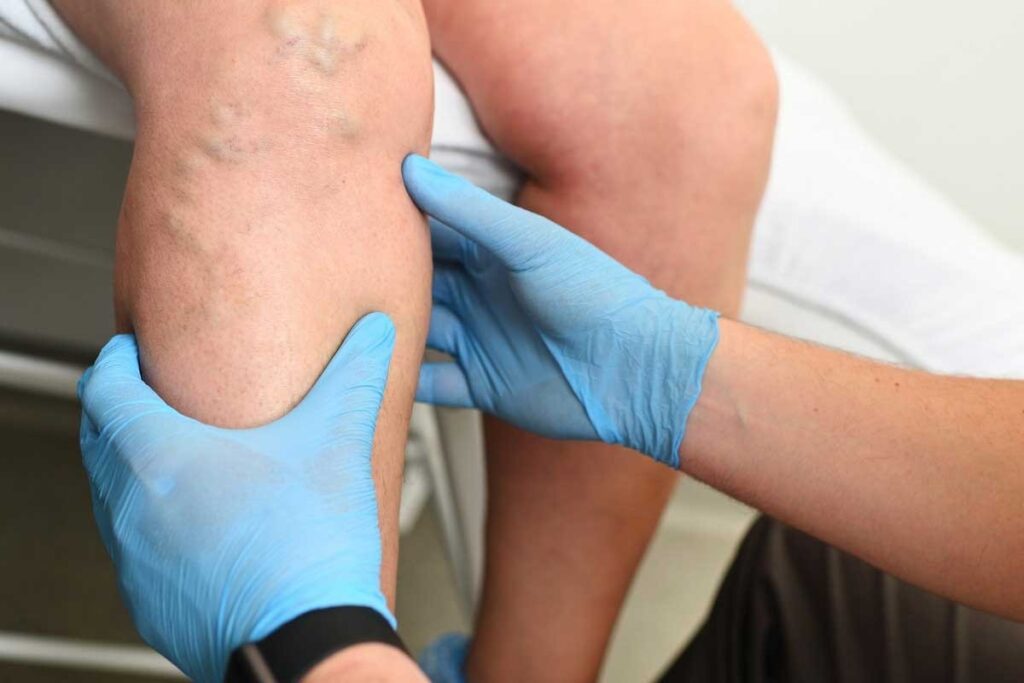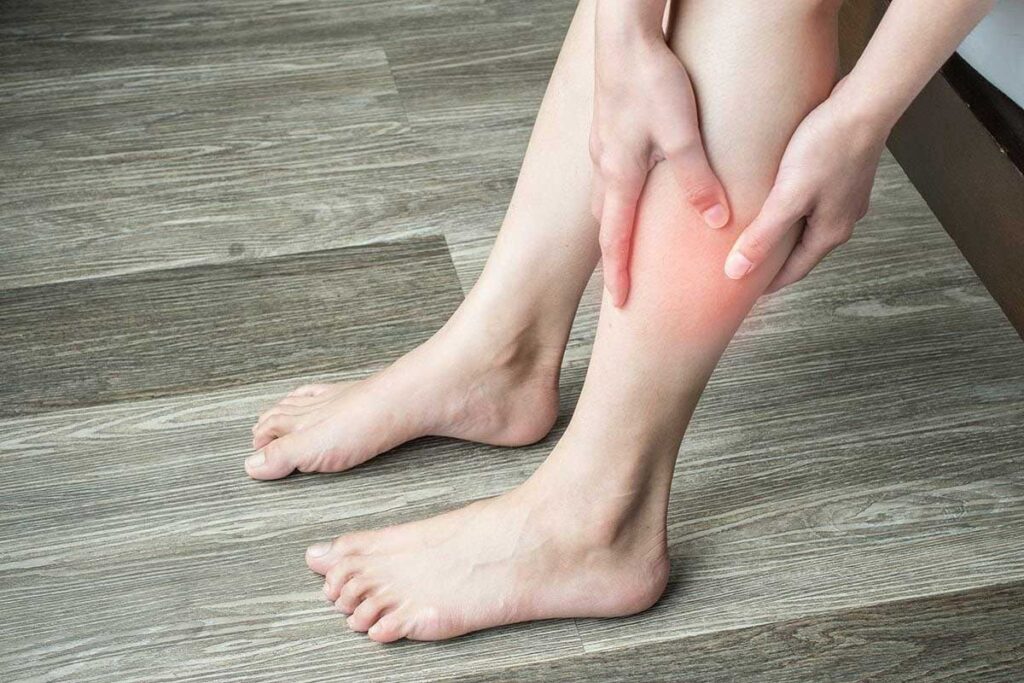At Liv Hospital, we understand the risks associated with deep vein thrombosis and the importance of taking preventive measures. According to the Agency for Healthcare Research and Quality, understanding these risks is key to managing DVT.
Leg clots can be a serious health issue. Knowing the signs and taking proactive steps can greatly reduce the risk. We will outline practical steps to help you avoid leg clots and provide expert insights into preventing DVT.

Our guide is designed to give you all the information you need to prevent deep vein thrombosis. It focuses on patient-centered care and expert advice from Liv Hospital.
DVT, or Deep Vein Thrombosis, is when blood clots form in deep veins, often in the legs. This can lead to serious health issues if not treated properly.
Blood clots in the legs are dangerous because they can break loose and travel to the lungs. This can cause a pulmonary embolism. Understanding the severity of DVT is key to quick action.
The Agency for Healthcare Research and Quality says up to 350,000 Americans get DVT each year. This shows how common DVT is and why we need to know about it.
DVT can cause pulmonary embolism, a serious and potentially deadly condition. Knowing the risks of DVT is vital for prevention and early detection.

It’s important to know the signs of Deep Vein Thrombosis (DVT) promptly. DVT symptoms can be different for everyone. Knowing the common signs can help you get medical help fast.
The calf is a key area to watch for DVT signs. Look out for pain, swelling, and warmth or redness. If you feel pain or swelling in your calf, see a doctor right away.
Blood clots can also appear in the upper leg and thigh. You might feel pain or tenderness there, along with swelling and warmth. Sometimes, the leg might look different in color.
Look out for signs like reddish or bluish skin and a swollen foot. Not all clots are visible, but knowing these signs can help. If your legs look different, talk to a doctor.

Spotting these signs early can make treatment more effective. If you notice any symptoms, get medical help without delay.
Understanding your risk for DVT is key to prevention. Many medical conditions, lifestyle choices, and situations can raise your risk.
Some medical conditions can greatly raise your DVT risk. These include:
Lifestyle choices also affect your DVT risk. These include:
Certain situations can make you more likely to get DVT. These include:
Moving your body regularly can lower your risk of DVT. We suggest a mix of simple exercises, regular activity, and an active lifestyle.
Doing leg exercises can boost blood flow and lower clot risk. Ankle rotations and toe wiggling are great for sitting or lying down. These moves are super helpful for those who can’t move much.
Studies show that walking can prevent DVT by improving blood flow (Source).
Sitting for too long raises DVT risk. We recommend getting up and moving every 30 minutes. Just stand, stretch, or take a quick walk.
Health experts say moving often can lower the dangers of sitting too long.
Living an active life is key to preventing DVT long-term. Add activities like walking, cycling, or swimming to your daily routine. Regular exercise not only fights DVT but also boosts heart health.
By making exercise a regular part of your life, you can greatly lower your DVT risk.
To lower the risk of Deep Vein Thrombosis, adopting healthy habits is key. Making a few simple changes can greatly reduce your chance of getting DVT.
Keeping a healthy weight is vital to avoid DVT. Being overweight can strain your leg veins, raising the risk of blood clots. Eating right and exercising regularly helps you stay at a healthy weight, lowering your DVT risk.
Stopping smoking is a big step in reducing DVT risk. Smoking harms blood vessel linings, making them more prone to clots. Quitting smoking can greatly lower this risk. Also, drinking alcohol in moderation is important. Too much alcohol can mess with blood clotting and vascular health. For more tips on managing risks, check out Patients Engage.
What you eat greatly affects your vascular health. Eating lots of fruits, veggies, whole grains, and lean proteins keeps blood vessels healthy. Foods like salmon and berries, rich in omega-3s and antioxidants, are great for your heart. A balanced diet supports your heart health and can lower DVT risk.
Sitting for long periods on trips can raise the risk of DVT. But simple exercises and strategies can help prevent it. When we travel, whether by air or road, we often sit for a long time. This can lead to blood clots in the legs.
Staying active is key during air travel. We suggest doing leg exercises like ankle rotations, toe raises, and calf stretches. Getting up and moving around the cabin every hour also boosts circulation. Wearing comfy, loose clothes and avoiding crossed legs can lower DVT risk.
For road trips, it’s important to plan stops. We suggest stopping every few hours to stretch your legs and move. Simple activities like walking or leg stretches can improve blood flow. Choosing a comfy seat and taking breaks to exercise also helps prevent DVT.
Compression stockings are great for preventing DVT during travel. They apply gentle pressure to the legs, improving blood flow and reducing the risk. When picking compression stockings, choose the right level and size. We recommend talking to a healthcare professional to find the best fit and learn how to wear them right.
We can lower DVT risk with specific medical steps. These steps are key for those at high risk.
Anticoagulants are often suggested for those at high DVT risk. Anticoagulant medications stop blood clots from forming or growing. Healthdirect Australia says these are for those having major surgery, in the hospital, or with a DVT history.
Preventing DVT after surgery is vital, like after hip or knee replacements. The Agency for Healthcare Research and Quality stresses following these protocols. This might include anticoagulant medications, mechanical devices, or compression stockings.
It’s important to work with your doctor on a DVT prevention plan. You’ll look at your risk factors, medical history, and current health. This way, you get a plan that fits your needs.
Understanding the risks and taking steps can lower the chance of getting Deep Vein Thrombosis. We’ve looked at the dangers of DVT, its warning signs, and what increases the risk.
We’ve talked about ways to prevent DVT, like moving every day, making lifestyle changes, and using preventive measures when traveling or sitting for long periods. Simple exercises, keeping a healthy weight, and wearing compression stockings can help manage DVT risk.
Preventing DVT needs a mix of awareness, lifestyle changes, and sometimes medical help. By using what we’ve learned, we can lower our risk of DVT and its serious complications.
Being proactive about DVT risk is key to keeping our blood vessels healthy. We urge you to share this info with others and talk to doctors to create a plan to prevent DVT.
A blood clot in the leg can make the area swell, turn red, and feel warm. The skin might look different or feel sore. Touching the leg can be painful.
Blood clots in the legs, or deep vein thrombosis (DVT), are serious. They can be deadly if they move to the lungs and cause a pulmonary embolism.
A blood clot in the calf might cause pain, swelling, redness, or warmth. You might also feel tightness or cramps in your leg.
Some people feel pain or tenderness in their legs if they have a DVT. Others might not feel anything. It’s possible to have a DVT without any pain or discomfort.
After surgery, signs of DVT include swelling, pain, or redness in the leg. You might also feel warmth or tenderness. Always follow your doctor’s post-surgery instructions and report any unusual symptoms.
To spot a blood clot in your leg, look for swelling, redness, or warmth. If you notice anything unusual, see your doctor. They might use an ultrasound or other tests to check for a blood clot.
Medical conditions like cancer or heart disease increase your risk of DVT. So does sitting for long periods or being immobile. Surgery or hospital stays also raise your risk.
To avoid DVT while traveling, take breaks to stretch and move. Stay hydrated and wear compression stockings. Simple exercises like toe curls and heel raises can also help improve circulation.
Compression stockings can improve circulation and lower DVT risk. They apply gentle pressure to the legs. They’re great for long trips or periods of sitting.
Yes, making healthy lifestyle choices can lower your DVT risk. Maintaining a healthy weight, quitting smoking, and drinking alcohol in moderation are good. Regular exercise and a balanced diet also support your vascular health.
Subscribe to our e-newsletter to stay informed about the latest innovations in the world of health and exclusive offers!
WhatsApp us